There’s a reason biophilic design keeps coming up in architecture and interior design articles, and it’s not just about adding a houseplant to your desk and calling it a day. When done properly, biophilic design has the power to fundamentally change how a space feels, how you work in it, and how long you can stay focused without burning out by lunchtime. It’s not about aesthetics alone, although it often results in beautiful interiors. It’s about how humans interact with their environment — and the fact that we were never meant to live and work in beige, plastic boxes.
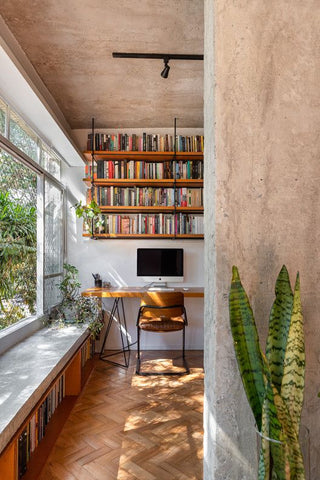
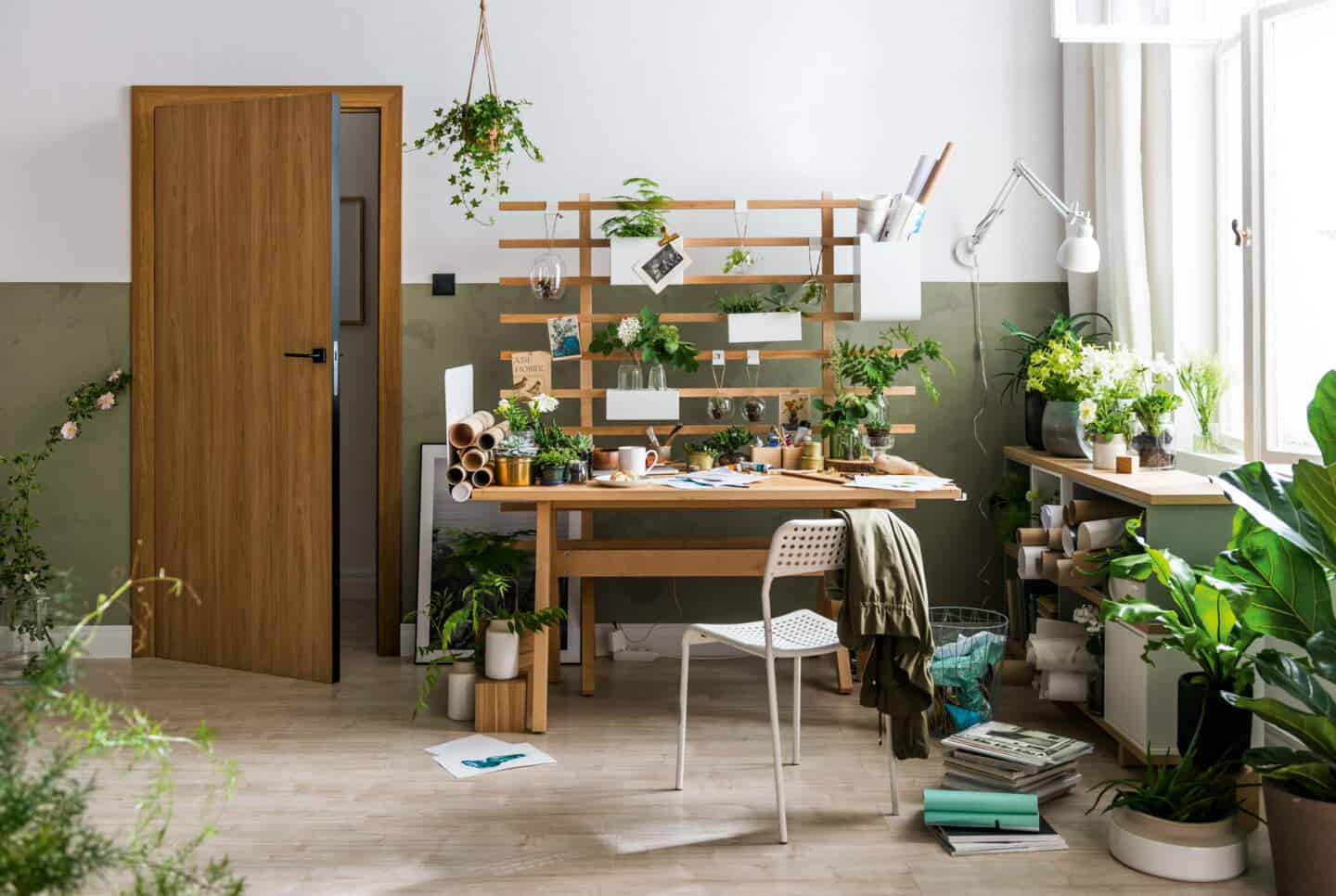
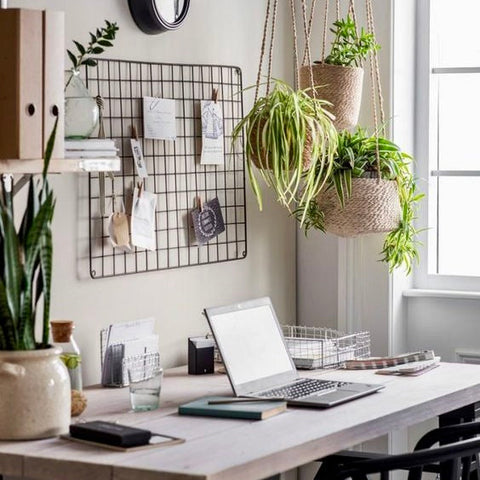
Biophilia, as a design principle, taps into our innate connection to nature. According to Architectural Digest and Dezeen, incorporating elements of the natural world — light, air, plants, water, textures — into built spaces has measurable effects on stress reduction and cognitive function. The idea is simple: people feel better when their surroundings reflect the rhythms and complexity of the natural world, not the flat sterility of corporate office lighting or MDF furniture.
Start With Light, Not Plants
A common mistake when people try to go biophilic is to head straight to the nearest plant shop. While greenery plays a role, the foundation of a truly biophilic space is natural light. The position of your desk should prioritise exposure to daylight over any other feature, even if it means sacrificing a wall for storage or a view of your gallery wall. Dezeen’s coverage of the 2025 Milan Design Week included several workspaces designed with nothing more than floor-to-ceiling windows, pale stone flooring, and a single, well-placed fern — and they still looked more alive than any Pinterest board of succulents.
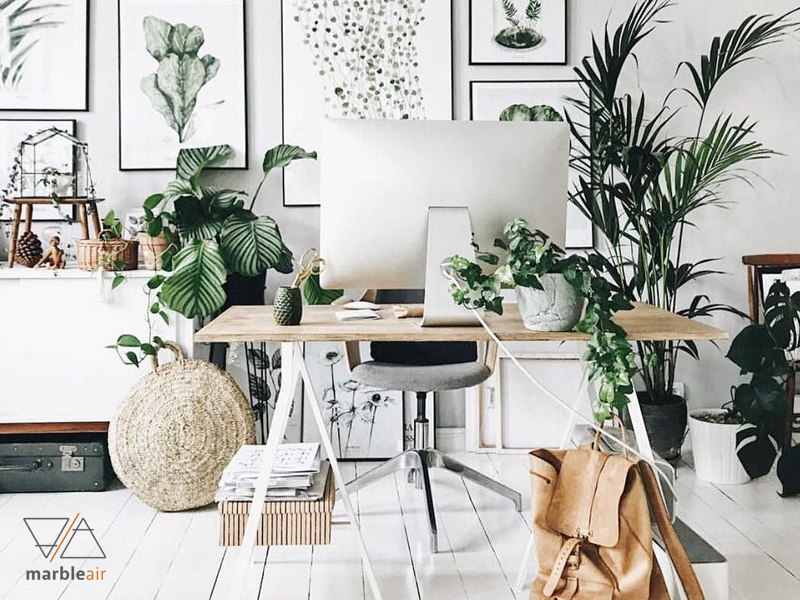
If your room doesn’t get much daylight, invest in adjustable warm-white lighting with dimmers. Some newer LED lights, like the ones used in wellness-centric office designs covered by Work Design Magazine, shift colour temperature throughout the day to mimic natural circadian rhythms. It’s subtle, but it matters.
See below our best finds for office lighting:
Layer Textures Like You’d Layer Clothing
Biophilic design isn’t just about visuals. The sense of touch — how your fingers feel on a linen desk pad or a hand-thrown ceramic mug — plays a crucial role. Designers like Ilse Crawford and firms such as Studio McGee often incorporate natural textures as a baseline: soft wool throws, oak desktops with visible grain, woven rattan, unsealed stone. These things age well, but more importantly, they don’t feel flat or cold. A space where nothing reflects light the same way feels richer, more complex, more like something that breathes with you throughout the day.
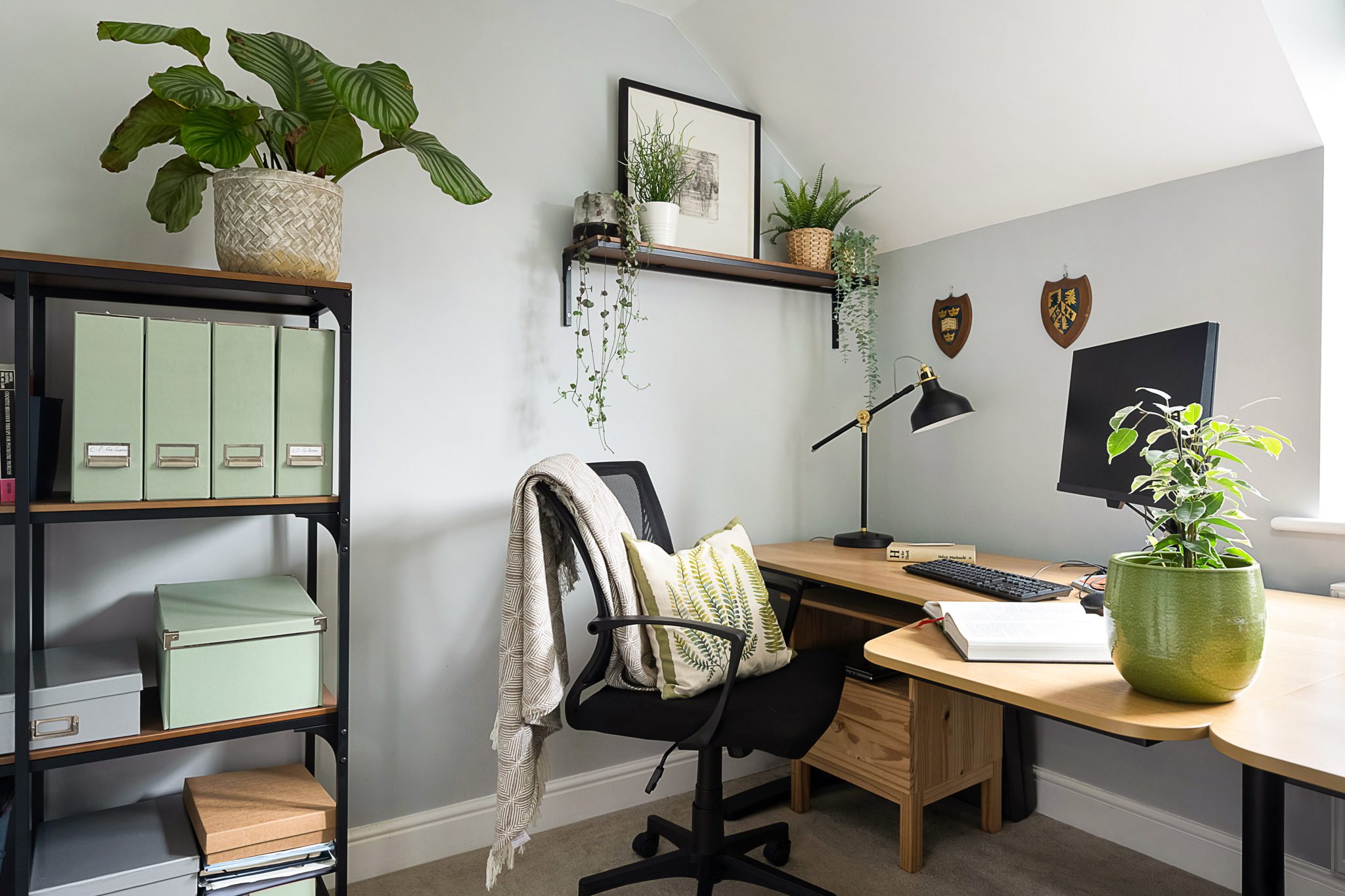
It’s also a subtle way to stop your home office from feeling like a showroom. Biophilic design isn’t meant to be overly styled — it’s supposed to feel lived-in, like something that’s part of the environment, not stacked on top of it.
Greenery, Yes — But Be Intentional
Plants aren’t decor, they’re co-inhabitants, or at least that’s how biophilic design sees it. You don’t need 20 species to get it right, but you do need to pick ones that will survive and ideally thrive in the specific conditions of your workspace. That means knowing how much light the room gets in the afternoon versus the morning, how much you travel, how dry your radiator makes the air. A neglected fiddle leaf fig drooping in the corner is worse than no plant at all.
Start with one or two that you can actually care for. The Spruce recommends pothos, ZZ plants or peace lilies for low-maintenance setups. If you want more structure, a snake plant or a small olive tree can add architectural height without needing daily attention.
:max_bytes(150000):strip_icc()/GettyImages-2170686151-675aeaba15364e1c876dc485f7e6d8d8.jpg)
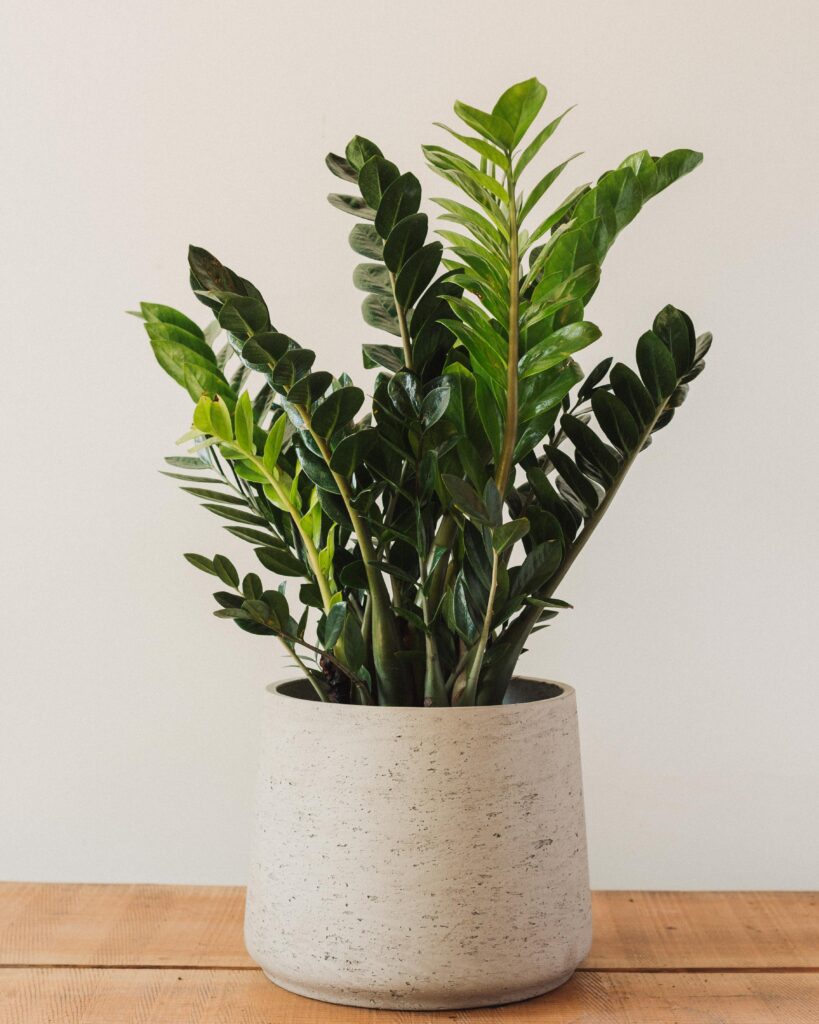
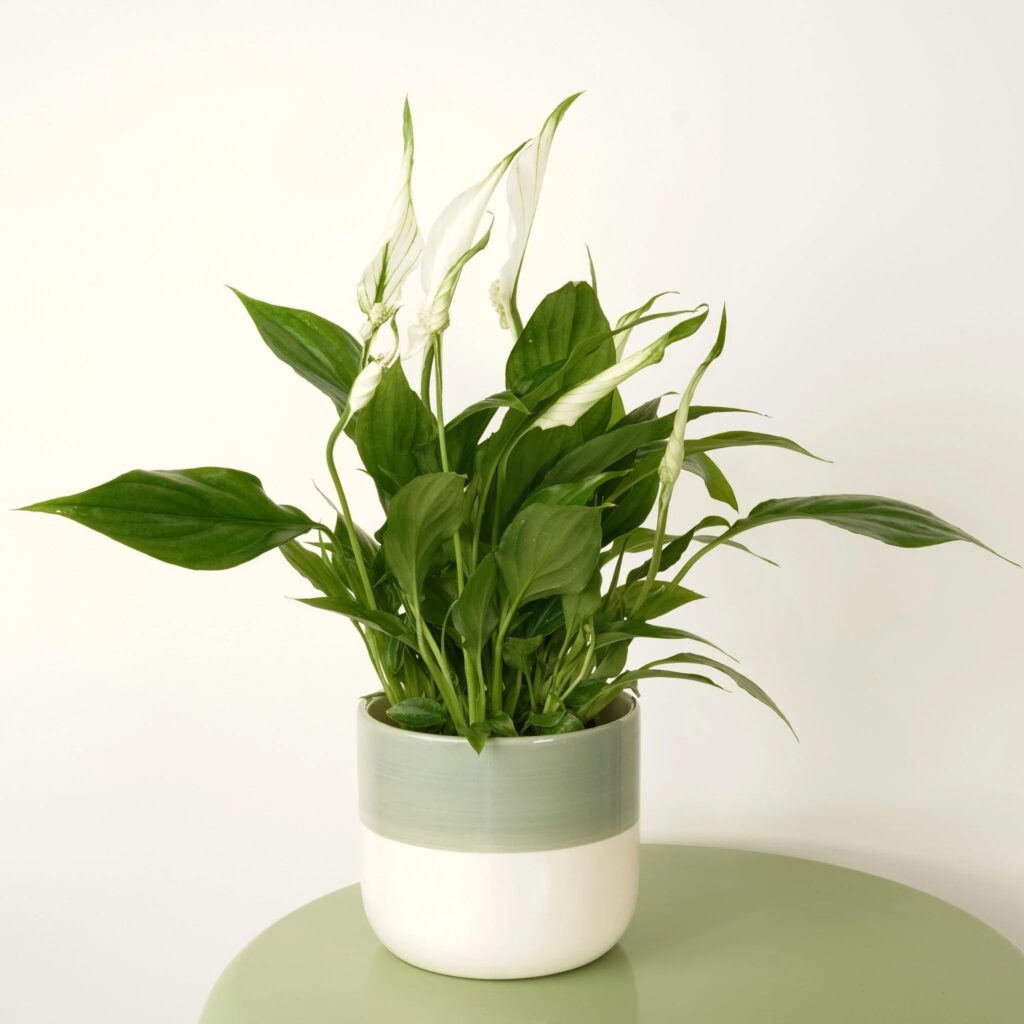
Don’t scatter them randomly. Cluster your plants near your reading chair or place them in sightlines from your desk. This way, you’re creating visual rest points — which, according to the Harvard Design Magazine, helps lower cognitive load during deep work.
Think About Air and Sound, Too
Air quality is one of the most overlooked parts of home office design. It’s not as Instagrammable as a green wall, but it has a more immediate impact on your energy levels. Consider adding an air purifier, or even just opening the windows more often. If you live in a city and noise pollution is an issue, natural sound machines or ambient nature playlists can help. Biophilic design, after all, includes natural soundscapes — not just the sight of nature, but the experience of being in it.
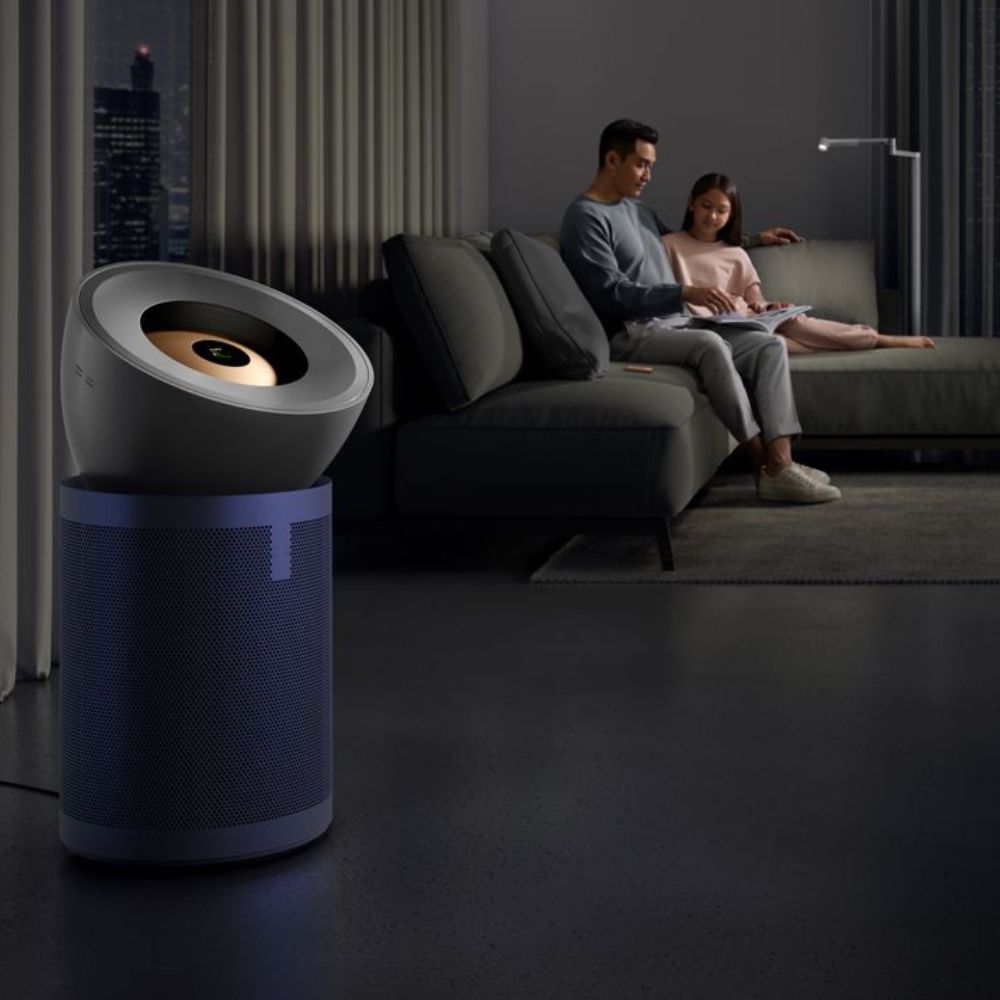
Some designers are now integrating indoor water features or natural textures on walls to enhance acoustics and calm. You don’t have to go that far, but choosing fabric-based furniture and rugs over hard surfaces can make your space quieter, softer, and easier to concentrate in.
Click below to read about the top air purifiers to have in your home in 2025:
Let Your Desk Be Part of the Landscape
Lastly, think about your workspace as part of a larger ecosystem. Instead of placing your desk in the centre like a monument to productivity, consider how it sits in the room. Does it face a window? Can you see the outside world? Can you work with your windows open and hear birds or rain? Your home office shouldn’t feel like a departure from the rest of your life — it should feel like an extension of it.
That’s the point of biophilic design. It’s not a trend, and it’s not a look. It’s a mindset shift away from sterile, efficiency-only spaces toward something more human. More textured. More aware of what it actually means to spend eight hours a day in one room.
Not every home can accommodate full green walls or architect-designed skylights. But every space — whether it’s a spare bedroom, an attic, or just a corner of your kitchen — can be adapted to feel more connected to the natural world. And once it does, you’ll probably find you work better, think more clearly, and breathe just a little deeper.


